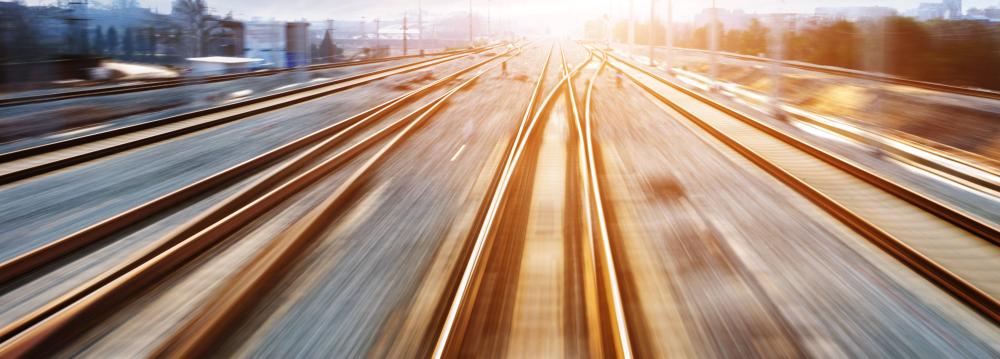Negotiations to finalize foreign investment deals Iran recently signed with global construction and transportation companies to help upgrade the country’s underdeveloped railroads are making progress.
The deals entail construction of new freight and passenger projects, electrification of railroads and the launch of high-speed trains.
A $5 billion railroad project, whose preliminary deal was signed between Tehran and Seoul during the South Korean President Park Geun-hye’s visit to Iran in April, is the latest in the cards.
The construction of the 540-kilometer railroad, which will connect the central city of Isfahan to the cities of Shahr-e-Kord in Chaharmahal-Bakhriari Province and Ahvaz in southwestern Khuzestan Province, is scheduled to start by the end of the current Iranian year (March 2016), according to Qasem Soleimani Dashtaki, governor general of Chaharmahal-Bakhtiari Province.
“South Korean engineering and construction conglomerate Daelim Industrial Company is the main investor of the project,” IRNA quoted the official as saying.
According to Dashtaki, studies on construction and financing of the project will be carried out in the next seven months.
The grand project will see the construction of several freight and passenger stations, rail bridges and tunnels across the route.
Dashtaki said the project will serve as a rail connection between Iran’s central regions to free waters.
“It will mark a turnaround in passenger and freight transportation by reducing road casualties and transportation costs,” he said.
Currently, roads account for up to 90% of transit in Iran, which is way above global average. The lower cost and fuel efficiency of rail transport have galvanized Iranian officials into considering a major overhaul of the domestic rail system.
Joining the Dots Along North-South Corridor
Iran has long been the center of attention in regional transportation with mega projects like the so-called International North-South Transport Corridor and New Silk Road.
INSTC, a major international project that seeks to connect India to Europe and Central Asia via Iran and Azerbaijan, is making good headway.
Tehran and Baku lately signed investment agreements to complete the missing rail links along the route, including a rail route between the Iranian cities of Qazvin, Rasht and Astara.
Deputy minister of roads and urban development, Ali Nourzad, earlier said the International Bank of Azerbaijan has approved a $500 million loan for the construction of the Rasht-Astara section, which is estimated to cost about $1.1 billion.
“The details of the loan are currently being discussed,” he said.
Nourzad did not specify the source from where Iran plans to obtain the remainder of the funds.
The Rasht-Astara section, according to Nourzad, is scheduled to be completed in four years and will be linked to Azerbaijan after the Iranian city of Astara is connected to a city in Azerbaijan with the same name. The construction of this route is currently underway.
On the Qazvin-Rasht section, Nourzad said this project has already made 93% progress and will be completed by March 2017.
Drawing on Siemens Technology
Iran has also banked on FDIs for the construction of electrified tracks and high-speed rail lines by major European companies such as Siemens.
Islamic Republic of Iran Railways has lately signed several memoranda of understanding with the German conglomerate’s transportation subsidiary, Siemens Mobility.
As per the agreements, Siemens will be in charge of electrification of Tehran-Mashhad Railroad, equipping the route with signaling systems, supplying locomotives and extending full maintenance services.
The overhaul is expected to cut the journey between Tehran and Mashhad from about 12 hours to six, and increase freight capacity to 10 million tons a year.
This route is part of China’s New Silk Road that runs from Urumqi in western China, through Kazakhstan and Uzbekistan, hitting Ashgabat in Turkmenistan before crossing south into Iran and down to Mashhad.
Under another deal for a Tehran-Isfahan high-speed railroad, Siemens is to prepare a proposal, including technical and financial requirements for the procurement of high-speed locomotives and signaling systems for the route.
The rail linking Tehran, Qom and Isfahan is a modern double-tracked line running at 200 kilometers per hour. It is the only high-speed project presently underway in Iran.
Work on the $2.7 billion project, which began in February 2015, was undertaken by the China Railway Engineering Corporation and Iran’s Khatam Al-Anbia engineering firm. Completion is scheduled for 2019.
AREP, the multidisciplinary design arm of French state-owned rail operator SNCF, has won the project for constructing stations.
In October 2015, Iran signed an agreement worth €1.2 billion with Russia for the electrification of the 450-kilometer-long Garmsar-Incheh Boroun Railroad in northern Iran within three years.
The route starts from Garmsar Station in Semnan Province and passes through Mazandaran Province to end at Gorgan Station.
IRIR Chief Mohsen Pourseyyed-Aqaei said in October that at least $25 billion worth of investment are needed to develop railroad projects across the country.


